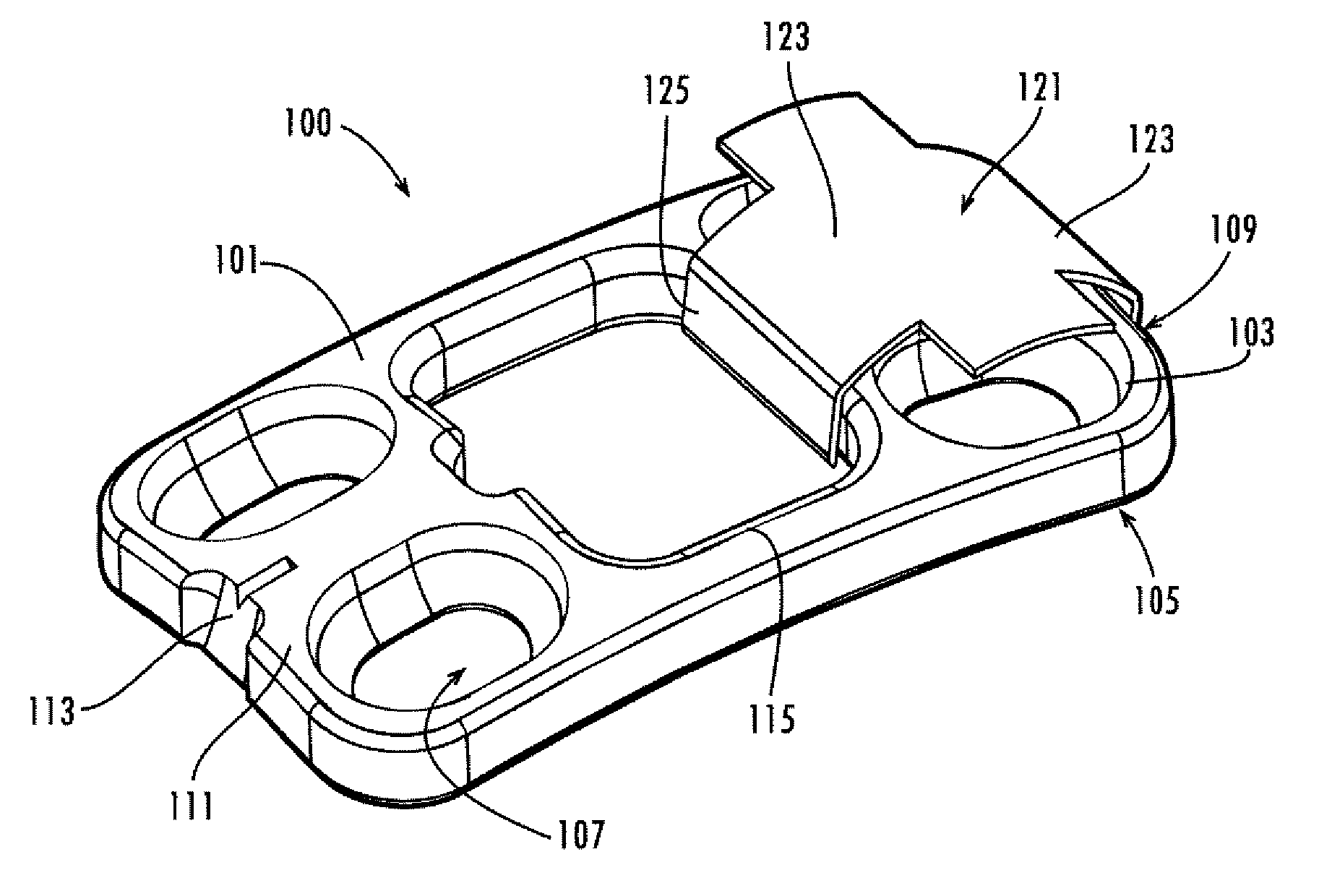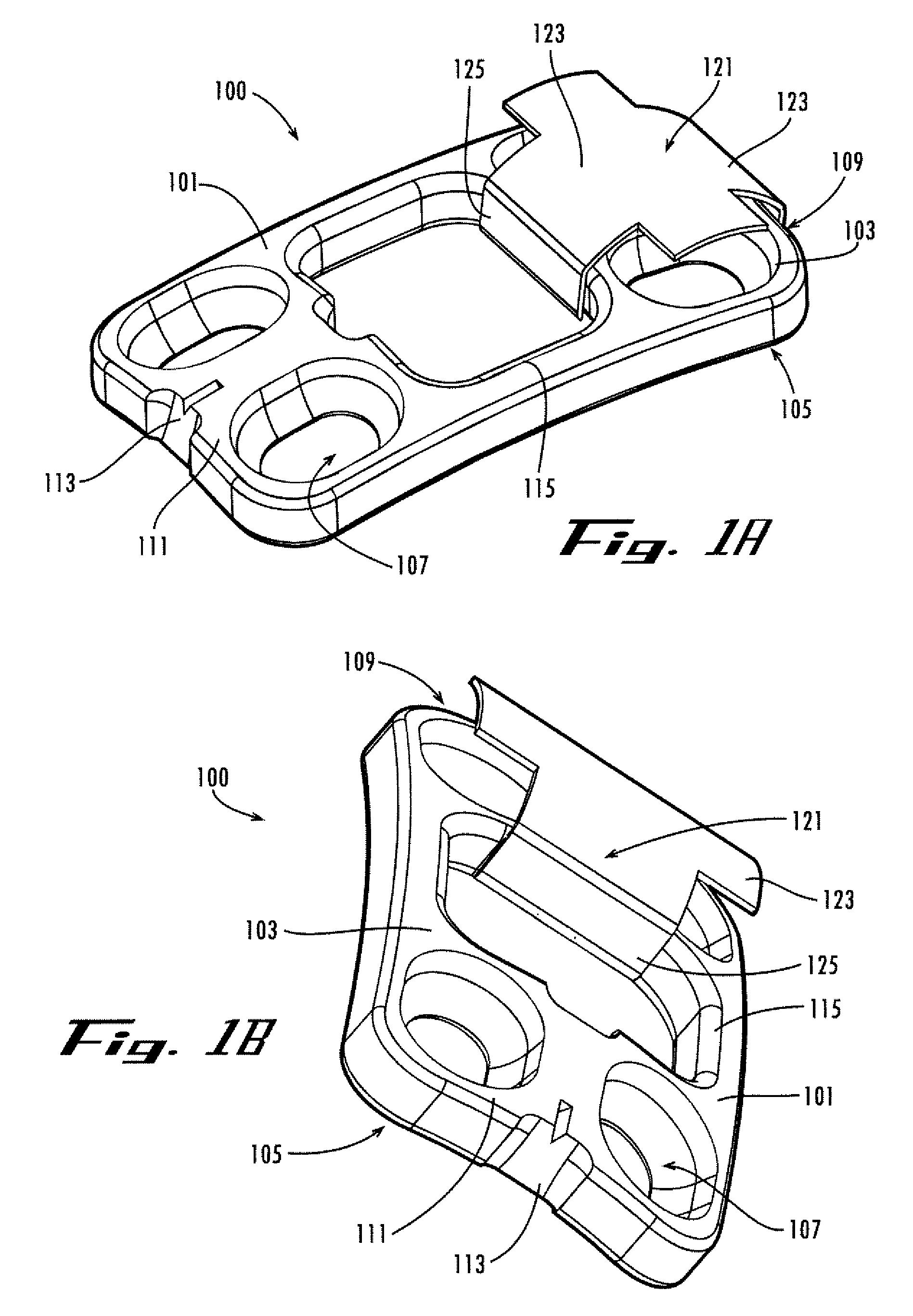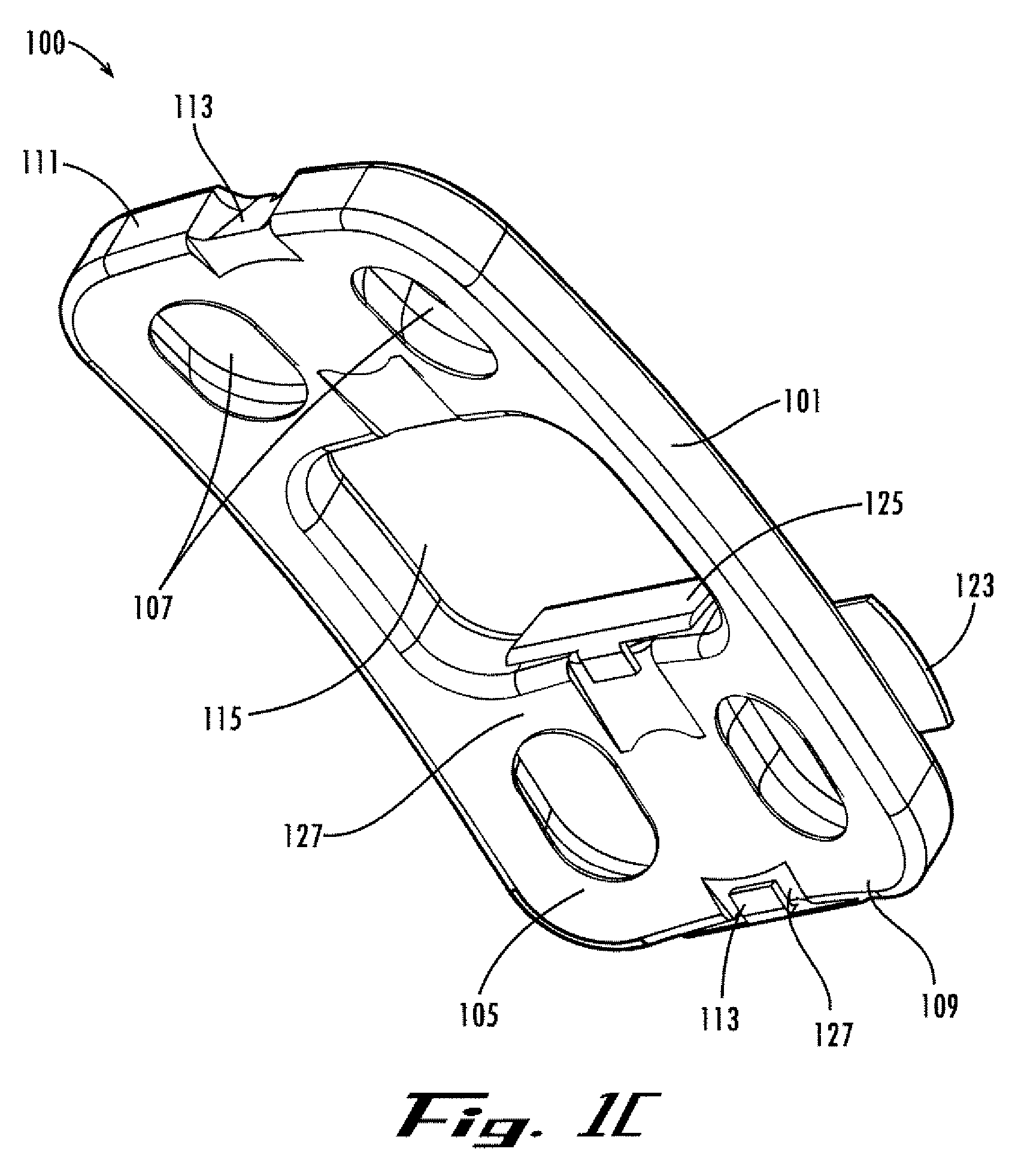Surgical stabilization system
a surgical stabilization and surgical technology, applied in the field of implantable surgical stabilization devices, can solve the problems of endanger the success of the operation, partial extrusion of bone plugs or screws, and certain inherent risks, and achieve the effects of enhancing post-operative healing, stabilizing and maintaining bone, and enhancing post-operative stabilization of the cervical spin
- Summary
- Abstract
- Description
- Claims
- Application Information
AI Technical Summary
Benefits of technology
Problems solved by technology
Method used
Image
Examples
example 1
Implantation of a Surgical Stabilization Device Using a Clip-on Shield
[0068] A transverse anterior cervical incision is made and the underlying tissue is dissected to laterally displace the trachea, esophagus, blood vessels, muscles, and major neural structures to expose the face of anterior cervical vertebrae at the desired level. The disease cervical disk is then removed, and a bone graft is inserted into the intervertebral space. This bone graft may be an autograft, using bone obtained from the same patient (e.g., hip graft) or an allograft (bone obtained from a bone bank from a cadaver) or a surgical spacer with bone material inside. The patient's own bone will grow into the bone graft and incorporate the graft bone as its own. This process creates one continuous bone surface and eliminates motion at the fused joint. To support the healing graft, and to further promote bone healing, a plate is placed to support the vertebrae to be fused. Using a template, holes are predrilled i...
example 2
Implantation of a Surgical Stabilization Device Using a Rotating Pivotal Shield
[0069] A transverse anterior cervical incision is made and the underlying tissue is dissected to laterally displace the trachea, esophagus, blood vessels, muscles, and major neural structures to expose the face of anterior cervical vertebrae at the desired level. The disease cervical disk is then removed, and a bone graft is inserted into the intervertebral space. This bone graft may be an autograft, using bone obtained from the same patient (e.g., hip graft) or an allograft (bone obtained from a bone bank from a cadaver) or a surgical spacer with bone material inside. The patient's own bone will grow into the bone graft and incorporate the graft bone as its own. This process creates one continuous bone surface and eliminates motion at the fused joint. To support the healing graft, and to further promote bone healing, a plate is placed to support the vertebrae to be fused. Using a template, holes are pre...
PUM
 Login to View More
Login to View More Abstract
Description
Claims
Application Information
 Login to View More
Login to View More - R&D
- Intellectual Property
- Life Sciences
- Materials
- Tech Scout
- Unparalleled Data Quality
- Higher Quality Content
- 60% Fewer Hallucinations
Browse by: Latest US Patents, China's latest patents, Technical Efficacy Thesaurus, Application Domain, Technology Topic, Popular Technical Reports.
© 2025 PatSnap. All rights reserved.Legal|Privacy policy|Modern Slavery Act Transparency Statement|Sitemap|About US| Contact US: help@patsnap.com



